The HTC 10 Review
by Joshua Ho on September 19, 2016 8:00 AM ESTFinal Words
It’s been a long road to get to this point. In order to try and take the HTC 10 as a whole then we can start by reviewing the details. At a high level, the HTC 10 is specced to take on the high-end Android market. As far as design goes, this represents HTC’s first major design shift since the One M7. I think it’s easy to write it off as a minor change but this device is now truly all metal and glass unlike the One M7, M8, and M9. Instead of plastic speaker grilles or plastic sidewalls like the previous designs, the front is just a sheer piece of glass with no logos or anything to really distract from the experience. The back cover is similarly almost all aluminum other than the antenna insulating lines and the RF window for GPS at the top of the phone. The logo on the back is painted on rather than a discrete, separate piece, and the FCC markings on this PVT are absent altogether in mass production units.
This design really in a lot of ways is HTC finally getting serious about the details as well. If you looked too closely at most of the phone the lack of ID detailing was apparent with SIM trays in random areas and poor color matching as well as buttons and other pieces scattered in a somewhat haphazard fashion. Things like the buttons are so much better than previous models with no take-up and a clean, crisp break with a hard stop. The top-mounted 3.5mm jack is not necessarily ideal for ergonomics but it’s still acceptable. The use of mostly-flat glass is appreciated as well, as those that like using screen protectors will be able to fully cover the display and capacitive buttons with a tempered glass protector unlike the Galaxy S7 or Note7. The move back to capacitive buttons also means much better ergonomics for typing. The One M8 and One M9 both had issues with this as the keyboard was just too high up on the phone to type comfortable with two thumbs, and the HTC 10 resolves this. If HTC makes another high-end device, I think they could afford to go another year before seriously changing the design of their phones again.
If there’s anything that really brings the HTC 10 down the most, it’s the display. While the calibration of the display is good enough and the use of a sunlight display mode means that I’ve never really struggled to see what I’m reading in direct sunlight, the HTC 10’s LCD panel has fairly low maximum brightness, contrast, and noticeable color shift with viewing angle changes. I suspect HTC may be constrained by their relative lack of economies of scale here which is contributing to the problem but for next year the display really needs to get better if possible. One interesting route if HTC intends to keep using LCD would be JDI’s “full active” displays which almost entirely eliminate the bezel requirement for the display driver, which would allow for something like a stereo front-facing speaker design with no “HTC bar” that has been associated with such designs in the past. AMOLED is another viable alternative here, but I’m not sure if HTC can get access to high quality AMOLED displays that would let them compete with other major OEMs.
As far as overall system performance goes, it’s not really a huge surprise to know that the HTC 10 mostly performs similarly to other Snapdragon 820 devices. The only notable slowdown here is the poor performance of the location provider in tests like Discomark and poor performance in the PCMark Video Playback test. These are long-standing issues at this point that persist across system updates so I suspect that solving such things may be more complicated than it really seems on the surface. Storage performance is also not necessarily as easy to call as it might seem despite the use of eMMC as the SLC/TLC hybrid architecture means that the HTC 10 has much faster storage in some scenarios relative to most UFS storage we’ve seen in devices this year. I suspect that by next year though it won’t really be possible to repeat this kind of relative performance and UFS or NVMe will be necessary to keep pace.
In battery life, the HTC 10 is actually fairly impressive when it comes to how well HTC can keep up with the competition. While the Galaxy S7 with Exynos 8890 is still going to last longer, for its size I don’t believe there’s another Snapdragon 820 device with better battery life. It doesn’t necessarily last as long as AMOLED at this point though unless you’re doing web browsing or similar scenarios with high APL. Throttling is also better-controlled than most devices I’ve seen with graceful degradation rather than sinusoidal behavior.
When it comes to the camera on the HTC 10, there are a lot of bright spots but also areas where it falls flat. For whatever reason the HTC 10 is just unusually slow to save images but focuses as fast as just about anything else with PDAF. For obvious reasons the Galaxy S7 and Note7 are still much faster at focusing, and Samsung has really optimized aggressively to get photo captures to be basically instant while the HTC 10 clearly has some latency in capture. On the other hand, the images produced by the HTC 10 on the whole are almost always better, and I would argue that video capture is usually better as well. There’s definitely room to improve here in the form of better optics, better encode settings, and faster capture, but the HTC 10’s camera is as good as, if not better than what you get in the Galaxy S7 and Note7.
High-end smartphones are increasingly differentiated by software and the HTC 10 is no different in that regard. HTC Sense is probably as good as it gets in the Android space if you have to pick an OEM UI though, as HTC has really focused on performance and removing redundancy in the shipping ROM. The HTC 10 with Sense is clearly smoother in most cases than something like the Note7 with TouchWiz, and in general what HTC apps are still around are well-designed to match with Android design guidelines so there aren’t any strange behaviors to learn around if you’re coming from a Nexus device. Third party apps don’t feel foreign either which is a nice bonus. It’s not all perfect though as there are still areas where HTC could stand to further optimize in areas like the weather application to try and get as close to 60 FPS as possible. The strange auto brightness and volume overlay behavior is also noteworthy, as is the lack of quick settings customization. Fixing these little niggles would get rid of pretty much all UI friction.
When it comes to WiFi, the HTC 10 is definitely disappointing. Received power is just not particularly competitive, and roaming latency is not very good. It’s strange that this is the case despite excellent cellular and GNSS reception, so I suspect there may be some interesting story behind the reason why this is happening. I suspect that these issues will go away as we continue to highlight them, but it’s concerning that it takes someone with the ability to use enterprise-grade test equipment in order to really discover these kinds of things.
When it comes to touch latency, to some extent HTC really is living up to their promises here. However, it seems that the claim is specific to drag latency where the HTC 10 is noticeably quicker to respond than something like the Note5 or the One M9. In general, the HTC 10 is one of the most performant Android devices I’ve used all year. It really feels like the Nexus 5 in a lot of respects when it comes to overall smoothness and responsiveness, which definitely wasn’t the case with the One M9.
In light of everything, the HTC 10 feels like it shows a lot of attention to detail and care that seems to be absent in a lot of devices that I’ve had to review in the past few years. There are definitely sore spots like the display and WiFi, but on the whole the great camera, audio, design, and software experience come together to make a great phone that has really aged quite well over the past few months. There’s been a lot of discussion about how the price is too much, but realistically it looks like the price is closer to 600 USD due to frequent discounts. Considering the direct competition in the price range, on the basis of the device itself I would argue that the price is about in line with expectation. Even now, with the iPhone 7 and Note7 available my experiences with the HTC 10 lead me to believe that it’s well worth buying still if you’re looking for a high-end Android device that can be used with one hand.



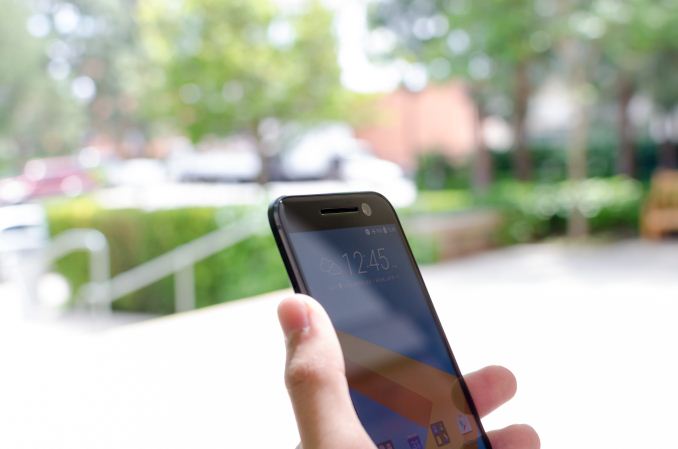
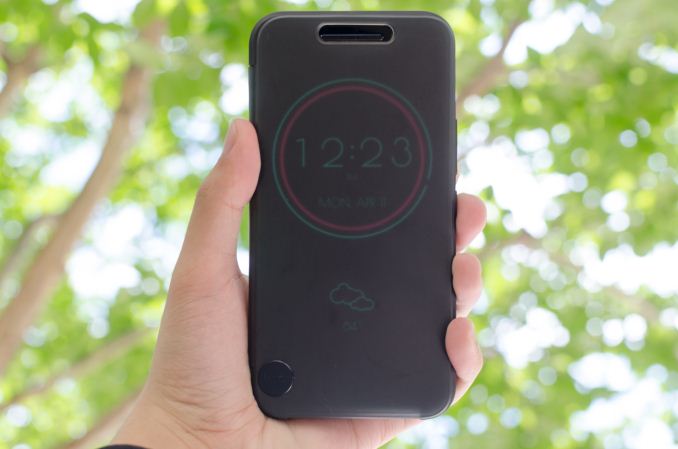
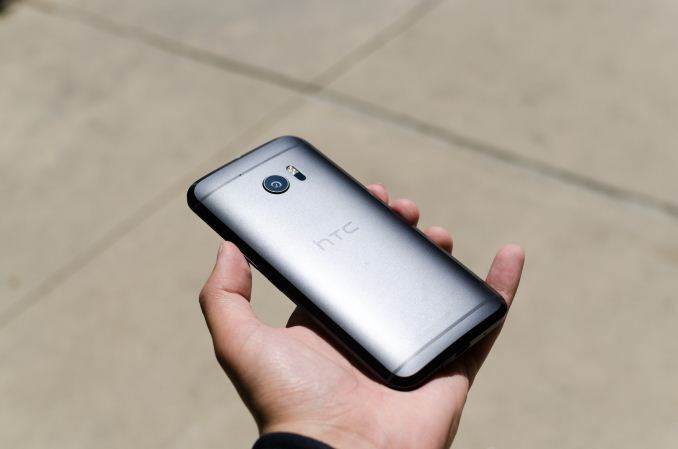
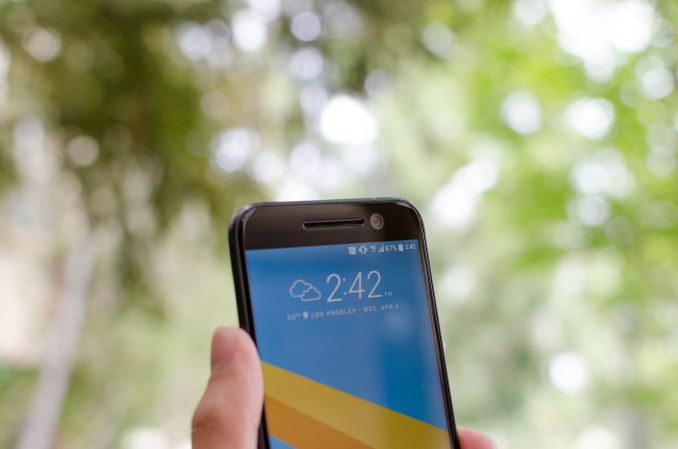
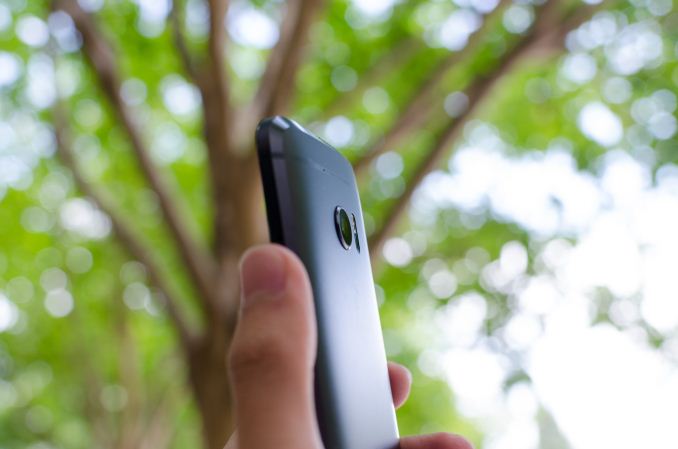









183 Comments
View All Comments
MobiusPizza - Tuesday, September 20, 2016 - link
Gosh that sentence is quite a mouthful
asfletch - Tuesday, September 20, 2016 - link
Agreed. Also re the content - is it surprising to anyone else that UFS solutions don't have a clearer advantage over eMMC? I mean my 2014 Note 4 gets about 19/7 on Random Read/Write with the same Androbench settings. According to these charts, that's better than the current Note 7. Also the HTC 10 here on test beats all of the UFS phones handily for Sequential Write speed.What's up with that? Is it the benchmark?
Guitahero - Tuesday, September 20, 2016 - link
What happened with the deep audio analysis from anandtech?JKJK - Tuesday, September 20, 2016 - link
Indeed! I miss them too!winjay - Tuesday, September 20, 2016 - link
"for its size I don’t believe there’s another Snapdragon 820 device with better battery life."Sony usually does wonders with battery life. Have you checked Xperia XA battery life?
Vagabondjonez - Tuesday, September 20, 2016 - link
with a 2k display he probably meantwinjay - Tuesday, September 20, 2016 - link
Also this phone is said to have an amazing DAC. How is the audio output?Ro_Ja - Tuesday, September 20, 2016 - link
The front looks like a Samsung Galaxy.amosbatto - Wednesday, September 21, 2016 - link
This review (and every other review I have ever read) doesn't cover the most important issue, which is the longevity of the phone. Here are the issues which I suggest that a review should cover:1. We all know that the battery will die after 2 years. Every phone which has a replaceable battery should automatically get a higher rating, just because it will probably last longer than one which doesn't. If a phone has a sealed case, the reviewer should try to open the case and give readers an idea how hard it will be to replace the battery. If the case is glued together, if the battery is glued to the case or if it is impossible to buy replacement batteries on the internet, then the review should let us know.
2. Reviews should emphasize the amount of storage space a phone has and how expandable the phone is, because this has a big impact on how long the phone will last. If a phone is limited to 32 gigabytes of storage, then the phone will probably not last more than 2 years, because people tend to buy new phones once they run out of space. Trying to decide what apps to uninstall, what music to remove, what photos to delete, etc. is such a painful process, that many people simply buy a new phone. Reviews should really knock phones which don't have a MicroSD slot to expand storage and I would love to see some benchmarking on the difference in speed between the internal NAND and a normal MicroSD.
Frankly, I wish that smartphone manufacturers would offer us phones with two MicroSD slots, where one is used to expand the storage for apps on the phone and the second is the memory that we can remove to transfer files to our PC.
Another thing that reviews should cover is how hard is it insert and extract a MicroSD card. On my HTC Sensation from 2011, it was very easy to pop the MicroSD card in and out of the computer, but it can't be done without a special tool on my Moto X Pure Edition. Not a single review ever covers how hard it is to insert and extract the MicroSD card, but this is essential information for people like me who intend to keep their phones for many years.
3. Every review should mention how good the manufacturer is about offering security updates and OS upgrades to its phones, which are essential for extending the life of the phone. HTC has an excellent track record of offering fast updates when a new version of Android is released, whereas Samsung does not. Every review comparing an HTC phone to a Samsung phone should mention this difference, because it will influence the buying decisions of people who care about the longevity of their phones.
4. Another way to extend the life of a phone is to install an OS that doesn't come from the manufacturer. If the manufacturer stops offering upgrades, then we have the freedom to install CyanogenMod or another mod to get the new features in the latest version of Android. No review ever covers how hard it is to unlock the bootloader and install a mod in the phone, but this is essential information for a phone buyer who wants to be able to keep upgrading the phone. Does the manufacturer offer for free the code to unlock the bootloader and does it have a policy of voiding the warranty if a mod is installed? Five years ago when I bought my Sensation, HTC had the best mod policies in the industry, but I have no idea who is best today and this review didn't mention it.
Another piece of essential information is how standard the hardware is and how likely mods will be developed for the phone. For example, the SoC on the HTC 10 is a standard Qualcomm Snapdragon 820, so it is highly likely that mods will be made for this phone, whereas it is highly unlikely that mods will ever be created for a custom SoC made by Huawei, Samsung or Apple. Yes, that custom SoC probably processes a couple milliseconds faster, but frankly most people will never notice the difference.
5. Another way to extend the life of a phone is to turn it into a PC. I frankly don't see the point of buying a flagship phone like the HTC 10 which costs $600, but I might consider it if I know that it can be used as a low cost PC. Kudos to this review for at least mentioning that the HTC 10 supports Slimline and Android 7, but it doesn't explain why that is important. The phone has the necessary hardware and software to be hooked up to a monitor and bluetooth keyboard and mouse, so it can be used as a PC with multiple windows and a mouse pointer. I would have loved to read a review about how well this works with the HTC 10.
Reviewers spend an inordinate amount of time covering differences in processing speed and other minutiae which most people will never notice when using a phone, but they don't provide the most essential information to help people choose phones with long lifespans. Part of the reason is that reviewers are the type of people who get a new phone every year, so they don't worry about the battery wearing out. However, I think a more important factor is that fact that sites like AnandTech rely on advertising from the same manufacturers who they are reviewing. Manufacturers of smartphones and other electronic devices promote planned obsolescence as a way to increase their sales. A reviewer who dwells too much on the fact that a phone is designed to be thrown away after two years probably won't get much advertising and is unlikely to get free samples to review.
Apple has always had some of the worst policies in the industry in terms of planned obsolescence, but within the last 5 years the entire phone industry has started to copy Apple in designing sealed black boxes which are difficult to open and even harder to fix. Yet, I have not seen a single review of the iPhone 7 or any of the other recent smartphones which even mentions how hard it is to fix the phone or even replace the battery. If the reviewers don't mention it, then consumers won't think to check and the phone industry will conclude that consumers don't want fixable and modifiable phones, so they will offer more and more Apple-like devices.
Extending the life of smartphones is not just a way to save consumers money. One of the biggest ecological problems on the planet is the fact that 1.5 billion smartphones will be manufactured this year and most of them will be junked within 2 years. More smartphones are manufactured today than all the other ICT devices combined (servers, routers, desktop and notebook PCs, tablets, gaming consoles, cameras, televisions and advanced wearables). The amount of energy, metals and other vital resources which are wasted every year in making throwaway devices is astounding. If we estimate that the average smartphone and its charger weighs 150 grams, that means we are generating 225,000 metric tons of eventual e-waste every year, which is toxic and needs special treatment.
Even more alarming is the amount of greenhouse gas emissions being generated to manufacture all these smartphones. Apple estimates that 83.6 kg of CO2-equivalent were emitted to manufacture and transport its iPhone 6 to point of sale, whereas using an iPhone for a year emits 3.5 kg CO2-e and recycling it at the end of its life emits 1.0 kg CO2-e. Of course, Apple didn't include all the energy to operate the cell towers, internet servers and routers, etc. that are used by an iPhone, but manufacturing a smartphone clearly has far more environmental impact than using it, so the best way to lower the environmental impact is to make the phone last as long as possible in order to avoid manufacturing a new phone.
Apple does not explain how it calculates its emissions, but it is highly likely that Apple did not include the SF6 which was emitted in manufacturing its screens or all the other types of greenhouse gases which often get overlooked. It also probably doesn't include in its emissions all the advanced processing to make the ultrapure chemicals, water and gases which are used in silicon and flat screen fabs. Today's crop of smartphones probably have an even higher environmental impact, considering that they are using larger screens, more memory and more processing cores than the iPhone 6, which had a 4.7in screen, 1 GB of RAM and 2 processing cores. Now-a-days, 5-6in screens, 2-4GB of RAM and 4-8 processing cores are the norm, so we can conservatively estimate that manufacturing today's smartphone will emit 100 kg CO2-e. For the 1.5 billion smartphones produced in 2016, that means 150,000 metric tons of CO2-e.
Allan_Hundeboll - Wednesday, September 21, 2016 - link
You def. have a point